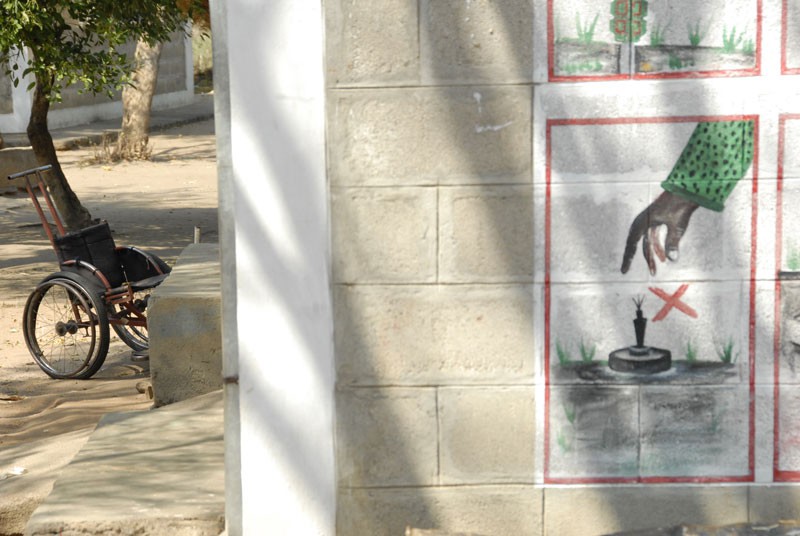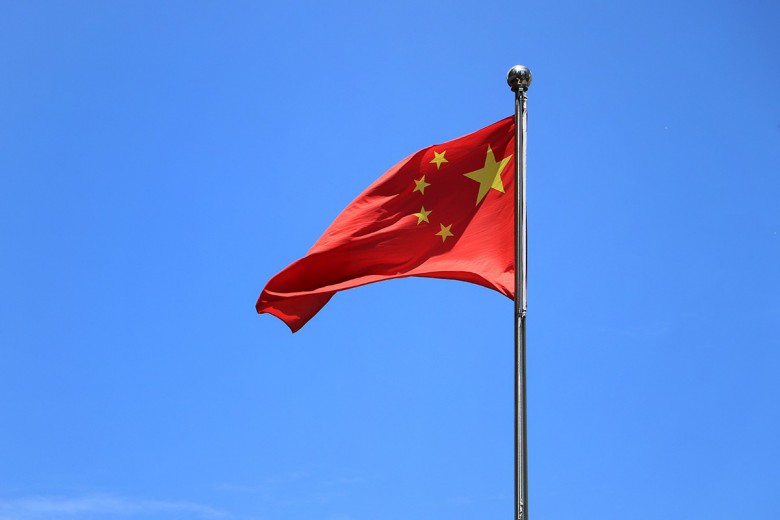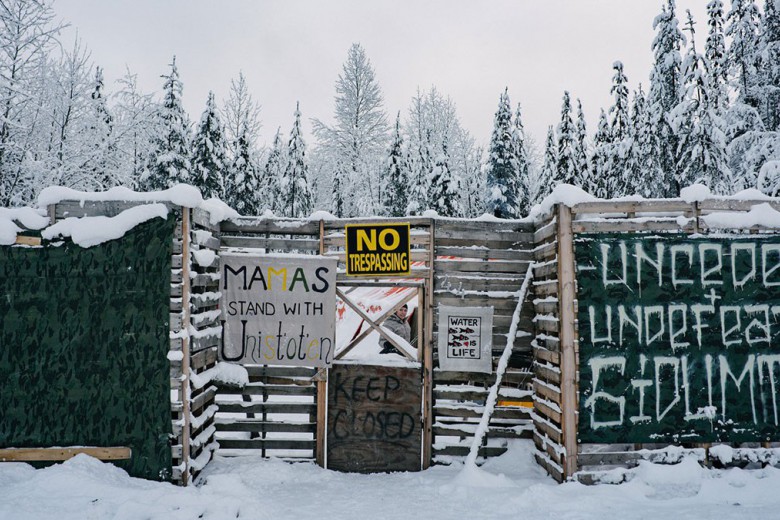
In the wake of the 10th anniversary of one of Canada’s greatest foreign-policy successes, the ripple effects of the Ottawa Treaty, also known as the Mine Ban Treaty, are still being felt among the sea of 65,000 south Sudanese refugees living in Ethiopia.
Signed on December 3, 1997, the Ottawa Treaty marked the first time in history that a conventional weapon being used by modern armies was banned for humanitarian reasons. The treaty prohibits the use, stockpiling, production and transfer of anti-personnel land mines, and requires their destruction. Though it was one of the most rapidly ratified disarmament conventions in history, the Ottawa Treaty could not erase the millions of unexploded land mines that remain in the world’s war zones and former war zones. In Sudan, for instance, up to two million mines continue to kill and maim in an area roughly twice the size of Newfoundland and Labrador.
The mines are left over from one of the longest and deadliest wars of the 20th century. Nearly two million civilians were killed, and four million were forced to flee their homes because of fighting, with many going to Ethiopia. Though the so-called Second Sudanese Civil War is officially said to have started in 1983, it was largely a continuation of the First Sudanese Civil War, which ran from 1955 to 1972. Both conflicts involved non-Arab populations in the south and the Arab-dominated government in the north. At stake were government representation for the south and control of southern natural resources, including oil, which makes up about 70 per cent of Sudan’s export earnings. During fighting, insurgents mined roads to restrict the mobility of government forces and to secure rebel-controlled areas, while the government used mines to protect government-held towns and to limit movement of insurgent troops. On January 9, 2005, the Naivasha Agreement finalized a peace process between the Sudanese government and the two primary southern rebel groups, the Sudan People’s Liberation Movement and the Sudan People’s Liberation Army.
Now that a peace agreement is in place, a plan is being implemented to repatriate the refugees to Sudan. There is a common perception that refugee camps are temporary, but the victims of “Sudan’s other war” are only now preparing to resettle to a homeland some have not seen for more than 20 years. While the world’s attention has shifted in recent years to the western Sudanese region of Darfur, little has been said internationally about the challenges left by the destructive legacy of war in south Sudan.
With thousands of refugees planning to return to southern Sudan, mines threaten long-term reconstruction and development activities by making arable land unusable, limiting access to water, threatening food security, hindering economic activity and restricting freedom of movement once people have resettled in their communities. The UN warns that mines in Sudan continue to pose a “great risk” to the Sudanese, as well as to emergency humanitarian assistance and peacekeeping activities.
To minimize the danger of the mines for returning refugees, groups like the Ethiopian NGO Rehabilitation and Development Organization organize mine risk education in the refugee camps. The goal is to integrate mine risk awareness into the everyday activities and consciousness of the refugees through educational activities. These activities pit drama, sport, songs and community dialogue against more than two decades of civil conflict that have left the face of Sudan scarred almost beyond recognition. Following a camp-wide question and answer tournament, a diminutive refugee girl proudly receives a dictionary and the congratulatory applause of her peers, for answering correctly that the skeletons of dead cattle can be an indication of a mine-affected area. Though such projects are no cure to the land mine problem, refugees will use signs such as these to minimize the danger they face from dormant mines when they return to southern Sudan.
The latest phase of repatriation to Sudan paralleled the 10th anniversary of the Ottawa Treaty. But alarmingly, international funding for mine action-demining, victim assistance, stockpile destruction, mine risk education and universalization of the Ottawa Treaty-decreased in 2006. In Canada, the government has announced plans to cut the $100 million Canadian Landmine Fund, which since 1997 has supported the implementation of the Ottawa Treaty. The cuts jeopardize the almost $2.2 million that Canada allocates to Sudanese mine action projects, approximately $600,000 of which is for mine clearance-the only certain means of ensuring safety from land mines.
From humble beginnings
With Iraq’s signing of the Ottawa Treaty in August 2007, 155 nations have now committed to put an end to the suffering and casualties caused by anti-personnel mines. Yet the treaty’s informal beginnings date back almost three decades. Throughout the 1980s, NGOs increasingly spoke out about how land mines hampered the development efforts of the countries they were working in. As mine action gained momentum through the 1990s, it coalesced into the International Campaign to Ban Landmines. By combining field research with the emotive images and personal testimonies of land mine survivors, campaigners were able to expose land mines as victim-activated weapons that do not discriminate between civilian and military personnel, adult and child, or war and peace. At the same time they argued that land mines are not particularly useful for regular state armies and, as such, are not essential to national security. The International Campaign to Ban Landmines’ call-to-action stated simply that “nothing less than a total global ban on land mines would be acceptable.”
Back in Canada, mine action was also intensifying. Musician Bruce Cockburn undertook a 1995 national tour to highlight the plight of land mine victims in Mozambique. In the process he amassed signatures from thousands of Canadians petitioning for decisive action on land mines. For their part, advocacy groups such as Mines Action Canada, a coalition of Canadian NGOs, launched a letter-writing campaign, screened documentaries, spent countless hours communicating with ministers and Members of Parliament, and even created a volunteer-staffed 1-800 line.
Eventually, national governments jumped onto the mine action bandwagon, and in the fall of 1996 the conference Towards a Global Ban on Anti-personnel Mines was held in Ottawa. The turning point of the conference came on the morning of the third day, when, in his closing remarks, then-Canadian Foreign Affairs Minister Lloyd Axworthy surprised attendees by independently calling for a comprehensive treaty banning land mines and inviting delegates to return to Ottawa in December 1997 for a treaty-signing conference. His challenge was greeted with applause from campaigners and annoyance from many diplomats. This was the launch of the so-called Ottawa Process, a diplomatic initiative to negotiate, in just over a year, an international land mine treaty. Upon their return to Ottawa in 1997, 122 states signed the agreement.
A sort of homecoming
Meanwhile, Sudan was in all-out war. To escape the conflict many people fled to other countries. Tens of thousands traveled on foot for weeks towards the dusty heat of western Ethiopia’s Gambella region. Once there, they settled amid the relative security of refugee camps, establishing new lives by constructing houses, marrying and starting families. Decades later a tripartite project between the United Nations and the governments of Sudan and Ethiopia will open the way for their return. Under the plan, refugees will be given three options: voluntary repatriation, local integration, or in special circumstances, resettlement to countries like Canada.
In Fugnido refugee camp, a mine risk education agent named Omot Kut Didumo, who works for the Rehabilitation and Development Organization, warns fellow refugees that “in principle there is peace, but underground we do not know.” A 14-year resident of the refugee camp, Didumo directs a club of volunteers in mine risk education songs during one of their weekly practices. Under his direction, three rows of toothy grins, aged 12 to 21, sing a simple yet heartfelt message:
“Mines are dangerous, mines are dangerous,
Mines are killers, mines are killers,
Protect yourselves.”
After the performance, from under the foreboding skull and crossbones of a mine risk education mural, one club member explains that she wants to help her community return to Sudan safely. Her sentiments are quickly echoed by a 15-year-old boy, who states confidently that “the land is full of mines, and if we can teach our people about them, they can be safe.”
Others participate for more personal reasons. Since coming to Ethiopia in 1986, mine risk educator Paul Ruot has married and had six children. Women and children are particularly at risk, he explains. “Because they walk long distances to collect firewood, women are vulnerable to mines,” while “children are very curious, since they are eager to explore and touch everything.” While fleeing an attack by militiamen, during which his parents were killed, Ruot and his two sisters split up. He has not seen them since he left Sudan, and has no idea if they are still alive. Seemingly having accepted the loss of his parents and siblings, he became involved in mine risk education to “protect the only family I still have.”
Ruot’s is a distressing story, one that is echoed by similarly distressing accounts from others. They read like adventure novels, the excitement of which is tempered by the harsh reminder that these narratives are not fictional. At 22, Omot Kut Didumo was arrested as a suspected rebel sympathizer and taken to a prison in the Sudanese capital, Khartoum. Once there he was interrogated and locked in with the general prison population. After surviving for two months among “murderers and rapists,” he escaped during a prison riot. Not knowing where to go, Didumo simply set out on foot, “moving at night from the forest, because the (government forces) controlled the roads.” After more than a week of travelling in this way, he eventually made his way to Ethiopia, and a few months later, to Gambella, and then to the Fugnido refugee camp.
At its peak, the Fugnido refugee camp was home to over 24,000 refugees. Following a series of recent repatriations, that number is now closer to 21,300. Though it is the biggest camp in Ethiopia, it is just one of three in the region. Bonga and Dima are the others, with over 11,000 refugees between them. After repatriation Bonga and Dima will be closed, while Fugnido will continue to operate for those who do not wish to return.
Even the process of repatriation is a reminder of the ever-present land mine problem. In the past months, heavy rains have delayed the return of many refugees. Wella Kouyou, the director of the Gambella sub-office of the UN agency overseeing the repatriation explains: “when roads flood, they may become contaminated by displaced mines.” As a result, previously cleared routes must be demined repeatedly. Whereas the placing and arming of land mines is relatively inexpensive and simple, the process of detecting and removing them is expensive, slow and dangerous.
Next steps
Those who choose to repatriate do so under extreme conditions. Often coming back to find that nothing remains of their former homes and villages, returning refugees must also contend with the reality that the land that used to feed them can now potentially maim or kill them. Sadly, the journeys of the south Sudanese are evidence that, a decade after the world came together under the Ottawa Treaty, many have forgotten the horrendous impacts that land mines still have on up to 20,000 people annually around the world. Indeed, Sudan is just one of 70 countries still blighted by mines. What’s more, 40 countries, including China and the United States, have yet to join the Ottawa Treaty, and two others, Burma and Russia, continue to use these indiscriminate agents of war.
Although Canada, as a territory, does not have a land mine problem, many Canadian citizens originate from war-torn countries. There are over 20,000 Sudanese-Canadians in the Greater Toronto Area alone. Most still have parents, children and spouses living in life-threatening environments. According to Mines Action Canada, acting as good neighbours and global citizens means not only staying committed to mine action and the Canadian Landmine Fund, but increasing Canadian funding for mine action from 72 cents per person per year to a dollar per year. The advocacy group also encourages supporters to donate their time by undertaking projects such as organizing community group presentations on land mine issues or fundraising events to support advocacy work.
As Lloyd Axworthy has said, “in what has already been accomplished there is much of which we, collectively, can be proud. (But) individuals and groups of Canadians must continue to be active in pursuing land mine activities… . I do have a belief that this country makes a difference, that we have a special vocation. Not that we’re better than anyone else. But our history and experience shows that you can use politics to build bridges.”





